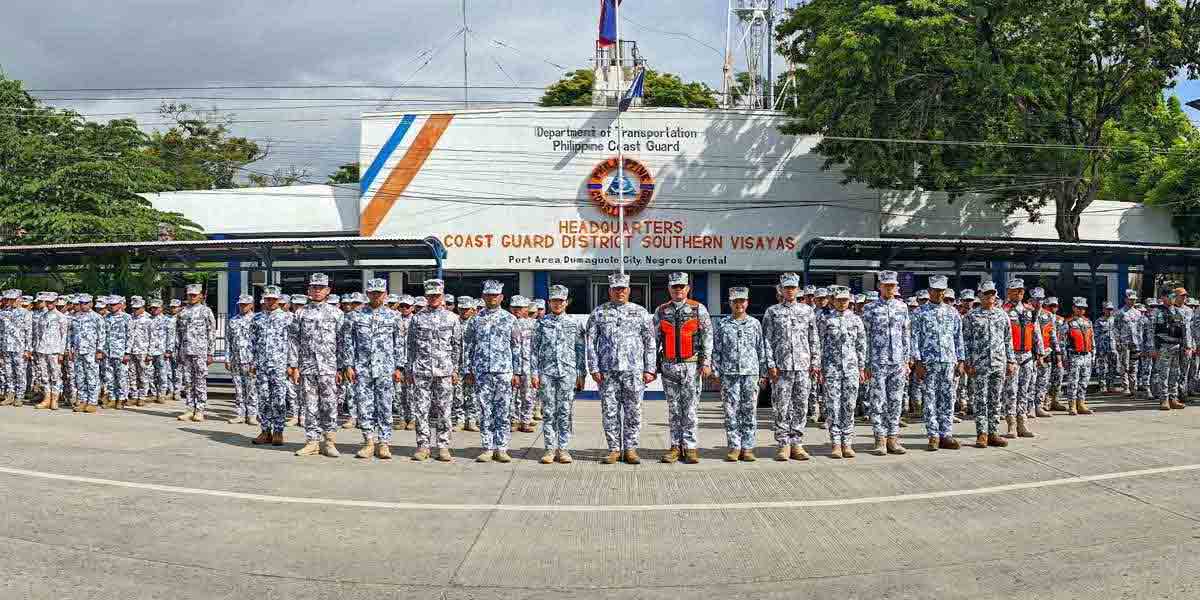By: Dr Kevin Henry Villanueva
(The author is a pure-blooded Ilonggo and a Balik Scientist of the UP System. This article was also published in the Philippine Daily Inquirer – Ed.)
THE naval and military buildup in our maritime heartland is a failure of diplomacy.
If war were to break out in the South China Sea, it would only be either America or China that would emerge as the genuine victor. Such a call will cast a shadow over hopes of a more robust and independent foreign policy. We shall not only lose effective control over our islands but also let the power of our destiny as an archipelagic nation slip from our hands.
Why are we being drawn into conflicts not of our own making? The admonition of Sun-Tzu – “If you know neither the enemy nor yourself, you will succumb in every battle” – is instructive because it conceals a third element that is central to the knowledge that opponents will have of each other. Why does one become an enemy – what is the reason and object of our strife?
The South China Sea represents a complex scenario of three issues which are interlocked: the first is the contest for spheres of influence between states; the second is the competition of claims for sovereignty and the delimitation of maritime boundaries, which derive from land features; and finally, there is the unseen conflict between the human species, the seas and the oceans. To be clear, I shall treat each of them briefly, propose that we look with a different set of lens and experiment on a fresh and new solution.
3 ANTAGONISMS
The first revolves around the stability that the United States and China seek in order to secure their national interests. The term “pivot”, which the United States has used to describe its rebalancing strategy in the Asia-Pacific, maintains its central dominance as a power that turns around to wherever there are threat and opportunity, and China in its eyes oscillates between these two ends. More recently, American influence has been framed in terms of the “Indo-Pacific”, which is an initiative the “Quad” (the US along with India, Japan and Australia).
On the other hand, China sees the world primarily as a network through which goods, services, capital and people can flow and expand in a global economy. It is steadily consolidating a multinational development strategy to spur trade and investment that includes the establishment of the Asian Infrastructure Investment Bank of the BRICS (Brazil, Russia, India, China and South Africa) as well as the Belt and Road Initiative (BRI), which includes, according to the World Bank, one-third of world trade and GDP and 60% of the world’s population.
Between these two global powers – one waning and the other wanting more – the South China Sea is a coveted millennial route between the East China Sea and the Eastern Mediterranean connecting economic dynamos, like India and Indonesia and valuable sources of energy and raw materials, including not only liquefied natural gas, coal and iron ore, but also crude oil from Africa and the Persian Gulf.
The grand military strategies that arise, invented to keep these lanes of communication free and secure, can thus easily throw the Philippines off course.
We risk stopping short of our preferences and long-term interest (e.g. a sustainable maritime environment) and settle for one of many outcomes (e.g. a presumably well-equipped navy). We become the undiscerning recipient of side payments, the basket of a burgeoning regional defense equipment industry – and end up taking sides in a theater of conflict.
The second scenario is a conundrum: Who owns which of what? There are fundamentally three contested areas in this sea – Scarborough Shoal and two archipelagos called the “Paracels” and the “Spratlys”, which comprise islands, rocks and low-tide elevations. The Spratlys has the biggest number of parties (6) that contest sovereignty on either historical or legal grounds.
ARBITRATION
The Philippines, in line with the Department of Foreign Affairs’ Triple Action Plan identified “arbitration” under the UN Convention on the Law of the Sea (UNCLOS) as the “final approach” and the “enduring solution” in the settlement of the dispute. UNCLOS establishes a universal standard for maritime zones over which states may exercise their rights and responsibilities, thus according primacy to international law over historical assertions.
The tribunal at the International Court of Justice ruled in favor of the Philippines in July 2016, but China has not accepted the terms. Indeed, it rejected the plan from the very beginning and refused to participate in the proceedings of the International Arbitral Tribunal in the Hague. Fundamentally, the Philippines sought a ruling on maritime rights and entitlements – not on the question of sovereignty. China contended, however, that unless sovereignty is resolved, rights and entitlements will remain undetermined. Therefore, the case is closed, but the issue remains open.
The problem here is that neither of the parties has put forth an untenable argument but that they come from two different assumptions or starting points, each of which pertains to a discrete institutional arrangement (i.e. UNCLOS , in any case, was not designed to adjudicate sovereignty), and that the grounds for questioning these assumptions cover and require geopolitical considerations. The Philippines has done well in pursuing relief from the fuzziness of zone jurisdictions but the process has likewise prompted us to the inchoateness of international law and intransigencies of states when in pursuit of power.
The third scenario turns on the silent death of the sea.
The alarm bells sounded off by National Scientist Dr Edgardo Gomez in 2012 alerted us then to the annual loss of $281 million because of the destruction of the coral reef system in the disputed areas. We are now reminded by Dr Theresa Lim that the ASEAN region hosts a third of the world’s coastal and marine habitats which provide regulatory ecosystem and cultural services, that all ten member-states have a total of 173,000 kilometers of shorelines, and that close to 500 million people will be living near these areas by 2050.
If we reflect presently on two more scientific facts about the present state of our oceans – one, its already strained absorptive capacity due excessive carbon emissions, and two, a “postwar technology” that has driven global fishing from an annual average of 15 million metric tons at the end of World War II to 85 million metric tons today – the danger leaves us mute.
There is an Italian saying that we are all under one sky. Are we not, I ask myself, all above one ocean?
HOW TO END A DISPUTE
The national debate and the policy prescriptions on its heels have missed the point. The Philippine stand on the South China Sea ought to be articulated on a wide but rational and adaptive policy agenda. I emphasize that the three scenarios above are not necessarily mutually exclusive – and this is exactly where leadership can transform. It is by linking them strategically that we can command as an independent country and guard ourselves against confusion and the impairment of the political imagination.
In the long term, we need a stable maritime infrastructure in the South China Sea – an international regime – to be understood as a set of principles, norms and decision-making procedures around which member-states’ expectations may converge. In the medium term, we must work toward a regional agreement – a sub regime – primarily, I believe, on the common stewardship of the Spratly Islands. The “threat” between China and the United States, and, depending on how they posture, the threat that they pose together, as we proceed to define our broader interests in the world, may and ought to be distinguished from the more practical aspects of how to behave in an area of competing claims.
Should this experiment succeed, we then derive a model on which variations can be made for the effective administration of the remaining islands and disparate land features, and from which rules and procedures can gradually be negotiated, including, if desired, more complex regional arrangements, such as humanitarian relief in natural disasters.
A NEW PROCESS: CONSENSUS AMONG CLAIMANTS
In the immediate term, the symbols of belligerence on our shores demand that a new institutional process be launched with diplomatic discretion and without delay. What does this initial step entail?
1) A fresh round of high-level consultations between the six claimants.
2) The specification of a new zone of agreement and the formation of a “consensus coalition”.
3) The establishment of an intergovernmental committee that will monitor and report on all agreed activities in the Spratly Islands.
The distinctive and principal features between this three-tier strategy toward an international regime and the on-going negotiations between ASEAN and China on the implementation of the 2002 Declaration on the Code of Conduct in the South China Sea cannot be overstated.
Dr Kevin Henry Villanueva is the first Professorial Fellow in Global Politics and Southeast Asian Diplomacy of the University of the Philippines and the national recipient of the 2018 ASEAN Fulbright Visiting Scholar. He holds a Master of Science in International Relations from the London School of Economics and a Ph.D. in International Politics from the University of Leeds [UK]. An earlier version of this essay appeared in the Philippine Daily Inquirer under the title “Strategy for peace in our seas”. The views expressed in this piece are his own. You may email him at [email protected].






















